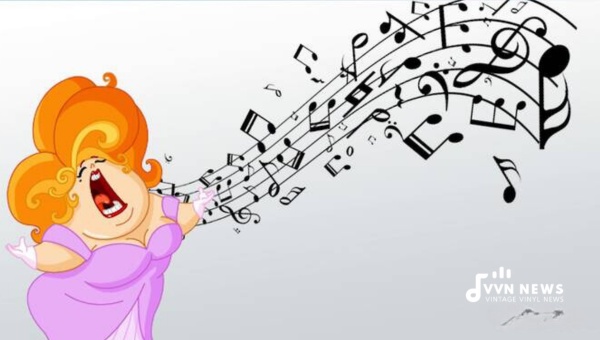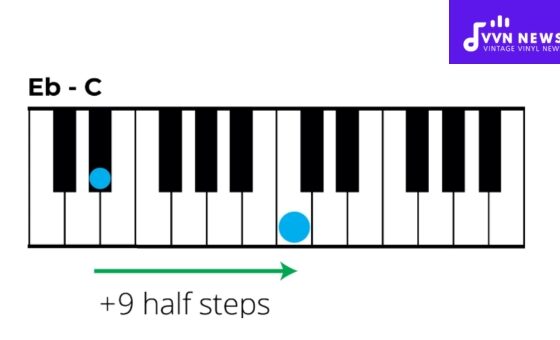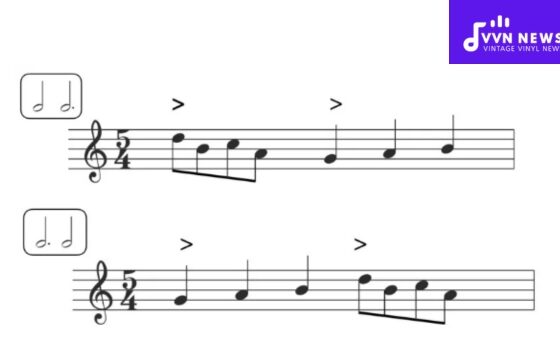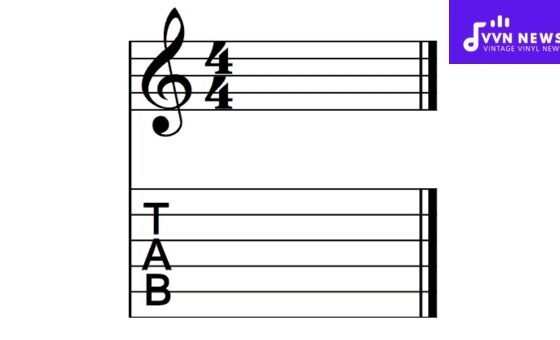When dealing with singing or voice acting, it’s crucial to understand voice types and their ranges.
This fundamental knowledge allows you to appreciate music more profoundly, improve your vocal skills, or simply comprehend the diverse universe of sounds we humans can produce.
Contrary to what people might believe, our voices are not confined to one static type; rather, they span across a spectrum, fluidly interchanging depending on numerous factors.
Today we’re taking a journey into the wonderful world of voice types and their ranges. Each voice type has its unique characteristics and range of notes it can comfortably perform.
By the end of this post, you’ll be able to distinguish between various voice types and how they align within musical scales.
Don’t worry; there’s no need for previous knowledge or musical dictionaries – everything will be explained in plain English!
Voice Types And Their Ranges
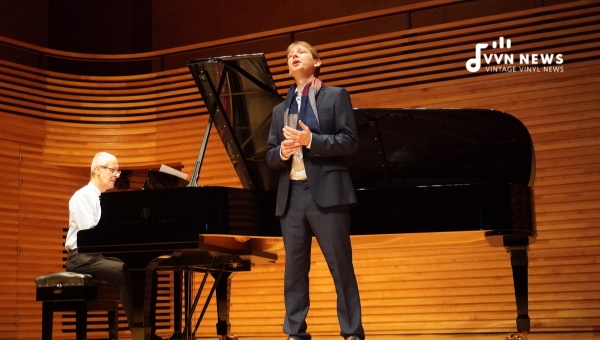
As a professional content writer, I aim to provide informative and engaging articles for my readers. Today, our focus is on voice types and their ranges – a topic that many find fascinating.
Whether you are an aspiring singer looking to identify your voice type or simply curious about the different classifications of voices, this article will provide valuable insights. So, let’s delve into the world of voice types and their ranges.
Mezzo-Soprano
The mezzo-soprano voice is one of the most common voice types for female singers. It falls between the soprano and contralto ranges.
Mezzo-sopranos have a rich, warm, and slightly lower vocal quality compared to sopranos. They possess a versatile range that allows them to comfortably sing both high and low notes.
Some key characteristics of the mezzo-soprano voice include:
- Range: The mezzo-soprano range typically spans from A3 to A5. This means they can hit both higher soprano notes and lower alto notes with ease.
- Tessitura: The tessitura, or the range where the voice sounds most comfortable and resonant, for a mezzo-soprano is usually between G3 to G5.
- Timbre: The timbre or tonal quality of a mezzo-soprano voice is rich, velvety, and expressive. It often has an intriguing mix of warmth and brightness.
- Roles in Opera: Mezzo-sopranos are often cast in roles that require strength, depth, and versatility. They frequently portray complex characters such as seductive heroines, femmes fatales, or maternal figures in operas.
Also Read: 15 Best Vocal Compressors of 2025 [Improve Your Vocal Mixing]
Tenor
The tenor voice type is generally associated with male singers and is well-known for its higher vocal range. Tenors can produce powerful and resonant sounds that cut through orchestration with clarity.
Here are some key points about the tenor voice:
- Range: The tenor range extends from C3 to C5 or even higher in some cases. This makes it possible for tenors to hit high notes with ease while maintaining power and control.
- Tessitura: The preferred range where a tenor sounds most comfortable lies between C3 and C4 but can extend up to E4. This is where the voice resonates best and showcases its full potential.
- Timbre: Tenor voices often possess brightness, clarity, and a compelling quality. They can exhibit a wide range of emotions, conveying both power and vulnerability.
- Roles in Opera: Tenors frequently take on leading male roles in operas. These roles can be romantic heroes, princes, or protagonists in various classical and contemporary works.
Baritone
The baritone voice type is the most common among adult males. It has a lower vocal range compared to tenors but higher than basses. Baritones have a warm, rich sound that allows them to convey emotions effectively.
Let’s take a closer look at the baritone voice:
- Range: The typical range for a baritone extends from A2 to A4. This range gives them the ability to sing both higher and lower notes comfortably.
- Tessitura: The tessitura for most baritones lies between F2 to F4 or G4. This range allows baritones to showcase their vocal strength with resonance and clarity.
- Timbre: Baritone voices possess a dark, full-bodied timbre that conveys depth and emotional intensity. It often exhibits richness and warmth with an excellent mid-range projection.
- Roles in Opera: Baritones are often cast in dramatic roles such as villains, fathers, authority figures, or romantic leads with conflicted personalities that demand expressive singing.
Bass
The bass voice type is characterized by its deep vocal range and resonant tones. Basses can produce powerful low notes while maintaining control and clarity in their singing.
Key points about the bass voice type include:
- Range: The bass range typically spans from E2 to E4 or sometimes even lower. Basses are known for their impressive low notes that can create a strong foundation within a vocal ensemble.
- Tessitura: The preferred range where the bass voice sounds most comfortable is usually between F2 and F3. It is here that the voice resonates best and exhibits its full power.
- Timbre: Bass voices are typically characterized by their depth, richness, and gravitas. They often have a strong resonance in the lower register and possess a commanding presence.
- Roles in Opera: Basses are frequently cast in roles that require authority, wisdom, or villainous traits. They portray characters such as kings, priests, fathers, or supernatural beings with deep insight and power.
Soprano
The soprano voice type is one of the highest female voice classifications. Sopranos are known for their bright, soaring sound and their ability to hit high notes with clarity and precision.
Let’s explore some important characteristics of the soprano voice:
- Range: The soprano range generally falls between C4 to C6 or even higher in some cases. Sopranos have an exceptional ability to reach high notes with ease while maintaining a pure tone quality.
- Tessitura: The tessitura for sopranos typically lies between C4 and C5, where the voice resonates most naturally. This range allows sopranos to showcase their agility and vocal dexterity.
- Timbre: Sopranos possess a bright, clear timbre that is often described as angelic or ethereal. Their voices can soar above other instruments and bring out the beauty in lyrical melodies.
- Roles in Opera: Sopranos often take on roles of heroines, love interests, or characters with innocent qualities in opera productions. They represent youthful energy, and purity or serve as a focal point for emotional expression.
Also Read: Types Of Flutes [Explore The Rich Variety Of This Instrument]
Alto
The alto voice type, also referred to as the contralto, is the lowest female voice classification. Altos have a rich and resonant sound that adds depth and richness to vocal ensembles.
Let’s explore some key characteristics of the alto voice:
- Range: The alto range typically spans from F3 to F5. Altos have a lower vocal range compared to sopranos and mezzo-sopranos, enabling them to sing in a lower register with ease.
- Tessitura: The tessitura for altos is usually between F3 and F4. This is where the voice resonates most naturally, allowing altos to showcase their warm and mellow tones.
- Timbre: Altos possess a dark and rich timbre that adds depth and richness to vocal harmonies. Their voices often carry a sense of warmth and emotional expression.
- Roles in Choral Settings: In choral settings, altos play an essential role in providing harmony and adding depth to the overall sound. They often provide a solid foundation for the higher voices, creating a balanced blend of sound.
Contralto
Contralto refers specifically to the lowest female singing voice classification within the alto range. Contraltos possess a deep, resonant quality that can add a unique richness to performances.
Here are some key points about contraltos:
- Range: Contraltos typically sing within the range of E3 to E5 or lower. They have an exceptional ability to hit low notes with clarity while maintaining vocal control.
- Tessitura: The preferred tessitura for contraltos lies between F3 and F4, where their voices resonate best and showcase their unique timbre.
- Timbre: Contraltos possess a full-bodied, warm timbre with distinctive richness at their lower registers. Their voices can be described as velvety and soulful.
- Roles in Opera: Contraltos are often cast in dramatic roles that demand a powerful and expressive voice. They portray characters such as sorceresses, villains, or women with a mysterious and seductive allure.
Countertenor
The countertenor voice type is unique among male singers, known for its ability to produce high notes with a lighter, more ethereal quality. Countertenors can sing in the alto or soprano range using a specific vocal technique.
Let’s explore some key characteristics of the countertenor voice:
- Range: Countertenors can sing within the range of G3 to C6 or higher. They can hit high notes with clarity and precision while maintaining a distinct falsetto or head voice sound.
- Tessitura: The tessitura for countertenors lies between D4 and G5, where their voices sound most comfortable and resonate well.
- Timbre: Countertenors possess a unique timbre that combines elements of both chest voice and falsetto. Their voices have a light, ethereal quality with an almost flute-like resonance.
- Historical Context: In historical contexts, countertenors were often used in baroque operas and choral music to perform roles originally intended for castrati (male singers who were castrated before puberty to preserve their high voices). Today, countertenors continue to be featured prominently in early music performances.
Also Read: 14 Types Of Reverb [Guide To Navigating The Soundscape]
Countertenor Voice
The countertenor’s voice refers specifically to the vocal technique used by male singers who can produce high notes using falsetto or head voice.
This technique allows them to emulate the range of female alto or soprano voices.
Here are some notable points about the countertenor voice:
- Vocal Technique: To sing in the countertenor range, male singers rely on a specific vocal technique that involves engaging the falsetto or head voice. By doing so, they can produce high notes with a lighter and more ethereal quality.
- Versatile Range: The countertenor voice showcases a versatile range, allowing male singers to perform pieces originally intended for female alto or soprano voices. They can seamlessly transition between their chest voice and falsetto/head voice.
- Historical Significance: The countertenor voice has played an essential role in reviving and preserving early music from the Baroque era. Countertenors have contributed significantly to performances of works by composers such as Handel, Vivaldi, and Purcell.
- Modern Usage: Countertenors continue to be celebrated in both classical and contemporary music. Their unique vocal abilities allow for captivating interpretations of a wide range of musical genres.
Major Voice Types in Singing
When it comes to singing, several major voice types classify the range and capabilities of vocalists.
These voice types can help singers identify their strengths, select appropriate songs, and reach their full potential. Here are the main voice types in singing:
- Soprano: Sopranos have the highest vocal range among female singers. They can produce bright, clear, and soaring high notes with ease and clarity. Sopranos often take on lead roles in operas and musicals.
- Mezzo-Soprano: Mezzo-Sopranos have a range that falls between sopranos and contraltos. Their voices possess a rich, warm tone and they can comfortably sing both high and low notes. Mezzo-sopranos often portray complex characters in opera.
- Contralto: Contraltos have the lowest female vocal range. They have a deep, resonant voice with a darker timbre compared to sopranos. Contraltos are known for adding depth and richness to choral ensembles.
- Tenor: Tenors have the highest vocal range among male singers. They can produce powerful high notes with clarity while maintaining control and projection. Tenors often play leading male roles in operas and musicals.
- Baritone: Baritones have a middle-range voice between tenors and basses. They possess a warm, rich tone with excellent mid-range projection. Baritones frequently portray authoritative or conflicted characters in opera and theater.
- Bass: Basses have the lowest vocal range among male singers, producing deep, resonant low notes with power and clarity. Basses often play roles that require authority or wisdom in opera or choral performances.
Also Read: All 23 Types Of Guitar Pedals [How To Choose Guitar Pedals?]
Choral Voice Classification
In choral music, voices are classified into various sections based on their range and timbre. This classification helps create balanced harmonies and ensures that each voice type contributes to the overall sound of the choir. Here are the common choral voice classifications:
- Soprano: Sopranos sing the highest vocal lines in choral music, often carrying the melody. They can produce clear, bright tones that soar above other voices in the choir.
- Alto: Altos have a lower female vocal range and provide harmony to the sopranos. They add depth and richness to the choral sound, often singing harmonies or countermelodies.
- Tenor: Tenors sing higher than baritones and basses in choral settings. They provide harmony or support to the sopranos and often sing in a similar range as female altos.
- Bass: Basses have the lowest vocal range among male singers in choral music. They provide a strong foundation for harmonies and often sing lower harmonies or bass lines.
Choral voice classification may also include subdivisions such as 1st Soprano, 2nd Soprano, 1st Alto, 2nd Alto, 1st Tenor, 2nd Tenor, etc., depending on the specific requirements of a particular piece or ensemble.
Coloratura Soprano
The coloratura soprano is a unique and highly skilled voice type within the soprano category. This voice type is known for its agility, flexibility, and ability to perform intricate vocal ornamentations and runs.
Here are some key points about the coloratura soprano voice:
- Range: The coloratura soprano possesses a wide vocal range that typically spans from C4 to C6 or even higher in some cases. This allows them to hit incredibly high notes with precision and clarity.
- Tessitura: The tessitura of the coloratura soprano lies in the upper part of the soprano range, usually between F5 and F6. This range allows them to showcase their virtuosic ability and agility in fast-paced melodic passages.
- Timbre: Coloratura sopranos often have a bright, sparkling timbre that is characterized by clarity and brilliance. Their voices possess a lightness that allows them to effortlessly navigate through challenging vocal passages.
- Roles in Opera: Coloratura sopranos are frequently cast in roles that require dazzling vocal pyrotechnics and virtuosity. They often portray characters such as queens, heroines, or mythical beings where their agile voices can shine.
Also Read: Types Of Electric Guitars 2025 [Solid, Hollow & Semi-Hollow]
Mezzo-Soprano
The mezzo-soprano is an incredibly versatile voice type that bridges the gap between the higher-pitched sopranos and lower-pitched altos. Mezzo-sopranos have a rich, warm tone that allows for expressive singing across a wide range of musical genres.
Here’s what you need to know about mezzo-sopranos:
- Range: The mezzo-soprano range typically spans from A3 to A5 or even higher in some cases. This gives them access to both higher soprano notes and lower alto notes with ease and versatility.
- Tessitura: The tessitura for mezzo-sopranos is usually between G3 and G5, where the voice resonates most naturally. This range allows them to showcase the fullness and warmth of their vocal tone.
- Timbre: Mezzo-sopranos have a distinct timbre that combines elements of both soprano and alto voices. Their tones often possess richness, depth, and expressive qualities that allow for emotional storytelling through song.
- Roles in Opera: Mezzo-sopranos are often cast in roles that require strength, depth, and versatility. They frequently portray complex characters such as seductive heroines, femmes fatales, or maternal figures in operas.
Major Voice Types in Singing
Singing encompasses a wide range of voice types that allow performers to express themselves through music.
While there are many variations and subcategories within each range, the major voice types can be classified into the following categories:
- Soprano: Sopranos has the highest vocal range among females, typically ranging from C4 to C6. They possess bright and soaring voices that can effortlessly hit high notes with clarity and precision.
- Mezzo-Soprano: Mezzo-Sopranos bridge the gap between sopranos and altos. Their range usually spans from A3 to A5, allowing them to access both higher soprano notes and lower alto notes comfortably.
- Alto: Altos have a lower vocal range compared to sopranos and mezzo-sopranos. Their voices possess depth and richness, typically ranging from F3 to F5.
- Tenor: Tenors have one of the highest vocal ranges among male singers. Their voices cover a range from C3 to C5 or even higher in some cases, allowing them to sing powerful high notes with control.
- Baritone: Baritones have a lower vocal range compared to tenors but higher than basses. Their voices possess warmth, richness, and depth, usually ranging from A2 to A4.
- Bass: Basses have the lowest vocal range among males. They possess deep and resonant voices that can go as low as E2 or even lower.
Choral Voice Classification
Voice classification in choral settings follows a slightly different categorization than solo voice types. In choral voice classification, singers are divided into four basic sections:
- Soprano: The soprano section consists of female singers with higher voices and includes both sopranos and high mezzo-sopranos.
- Alto: The alto section consists of female singers with lower voices and includes both mezzo-sopranos and altos.
- Tenor: The tenor section consists of male singers with higher voices.
- Bass: The bass section consists of male singers with lower voices.
Choral voice classification is essential for creating balanced harmonies within a choir and ensuring that each part blends harmoniously together.
Also Read: How To Use A Patchbay In 2025? [Different Types And Rules]
Mezzo-Soprano
The mezzo-soprano voice type is a popular classification among female singers. It has a versatile range that allows for both high and low notes. Here are some key details about the mezzo-soprano voice:
- Range: The mezzo-soprano range typically spans from A3 to A5, covering both soprano and alto registers.
- Tessitura: The most comfortable vocal range for a mezzo-soprano is usually between G3 to G5.
- Timbre: Mezzo-sopranos have a rich, warm, and expressive tonal quality.
- Roles in Opera: Mezzo-sopranos are often cast in complex character roles such as seductive heroines or maternal figures.
The various voice types and their ranges is crucial for both aspiring singers and music enthusiasts alike.
It allows individuals to identify their vocal strengths, choose suitable repertoire, and appreciate the unique qualities brought forth by each voice type in the world of music.
FAQs about Voice Types and Ranges
What is the highest voice type for female singers?
The highest voice type for female singers is the coloratura soprano. They can hit incredibly high notes and often excel in virtuosic singing.
Are there different subcategories within the tenor voice type?
Yes, within the tenor voice type, there are subcategories such as lyric tenor, spinto tenor, and dramatic tenor, each specializing in specific vocal qualities and repertoire.
Can a mezzo-soprano sing both soprano and alto parts?
Yes, mezzo-sopranos have a versatile range that allows them to comfortably sing both higher soprano notes and lower alto notes.
Do all bass voices have equally deep ranges?
No, there are variations within the bass voice type. Some basses have an exceptionally low range known as “basso profondo,” while others have a higher range known as “bass-baritone.”
Can someone’s voice type change over time?
A person’s voice can shift or change over time due to factors like aging or vocal training. However, most individuals maintain their primary vocal classification throughout their lives.
Conclusion
The different voice types and their ranges is essential for singers to harness their full potential.
From mezzo-sopranos to tenors, baritones to basses, and sopranos to altos, each voice type brings its unique qualities and strengths.
By knowing your voice type and range, you can select suitable songs, showcase your abilities, and confidently navigate the world of vocal music.
So embrace your voice type, explore its capabilities, and let it soar with passion and expression. Happy singing!
